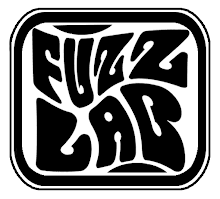 The legendary Cactus. Tim Bogert and Carmine Appice from Vanilla Fudge, Jim McCarty from the Detroit Wheels, and Rusty Day who sang in the Amboy Dukes. This much hyped band deserves a whole lot of that hype, but I wanted to give my own reviews of Cactus' albums so that the uninitiated listener doesn't pick this up expecting wall-to-wall heavy Sabbath style riffage, only to be disappointed and give up on them altogether.
The legendary Cactus. Tim Bogert and Carmine Appice from Vanilla Fudge, Jim McCarty from the Detroit Wheels, and Rusty Day who sang in the Amboy Dukes. This much hyped band deserves a whole lot of that hype, but I wanted to give my own reviews of Cactus' albums so that the uninitiated listener doesn't pick this up expecting wall-to-wall heavy Sabbath style riffage, only to be disappointed and give up on them altogether.Cactus was formed by Tim Bogert and Carmine Appice after leaving Vanilla Fudge (check out the Boomerang review to see what became of another Fudge member). The plan was to have Jeff Beck play guitar with Cactus, but a car crash intervened, sidelining Beck and opening a slot for Jim McCarty (Beck did hook up with Tim Bogert and Carmine Appice in 1973 after the demise of Cactus to record Beck, Bogert & Appice, which among other gems has an insanely cool version of Superstition- which, btw, I heard Jeff Beck had a hand in writing with Stevie Wonder-if anyone knows the real story there let me know).
Cactus' self titled debut was released in 1970 and was a loud and boisterous American response to the heaviness that had come across the pond from Sabbath's first 2, Zep's first 2, Deep Purple In Rock, etc. This album, while lacking in the crushing riffage and gothic darkness of Sabbath, is a bold and vital piece of the emerging hard rock and metal to come. Most of the songs are heavy electrified boogie, but with Marshalls cranked to 11 and turbocharged beyond the confines of rhythm and blues. Starting out with a blazing, careening take on Parchman Farm (which many will remember was fuzzified not so long prior by the acid drenched Blue Cheer) we see immediately where this ride is headed; we see what, ultimately, is my favorite thing about Cactus: the balls-to-the-wall, no turning back, always on the edge of destruction approach. These guys are doing 120 mph in their '68 Shelby Mustang,headed for a cliff, Rusty's riding on the hood, Carmine's hangin' out the window, the wheels are starting to come off, and they don't care! Floor it, man!
After Parchman Farm they do slow it down though with My Lady From South of Detroit , which is an acoustic ballad. Things start to pick up again with the twangy somewhat goofy blues of Bro. Bill. They get back up to cruising speed with the Willie Dixon tune You Can't Judge a Book. It's a little deceptive in the beginning with the acoustic guitar on the first verse and lots of harmonica, but it is soon full on vintage Cactus - blistering Jim McCarty guitar over the maelstrom that swirls underneath created by Bogert and Appice. Let Me Swim is a boogie rocker with a good share of riffage and a smokin' vamp at the end. Oleo is another heavy boogie with a bit too much white boy harmonica, but rocking hard enough to make it not matter. Feel So Good is maybe the most full on riff-based and forward thinking rock song on the album, despite the obligatory 70's drum solo. No Need to Worry is a bit of a disappointment for me. It's a straightforward slow blues, which has the potential for greatness(think of Johnny Winter's Tribute to Muddy or Taste's Catfish Blues or Hendrix Hear My Train a Comin'), but this stays just that, a slow blues and fails to rise above that, unlike the other examples just mentioned. Don't get me wrong, it is still a well done blues song, but it doesn't make the cut when I'm making a compilation of Cactus tunes.
Even though it feels like these guys were simply out of control, hard partying, acid heads, this is the first formative statement from a first rate band of great musicians that knew how to push it to the very edge and still keep retain control like few others could. The next two albums, One Way or Another and Restrictions were still heavy on the blues, but with more riffing mixed into the fray.
Riff Density 6
Riff Caliber 8
Post Blues Factor 4
Groove Factor 10
Dig It 7

